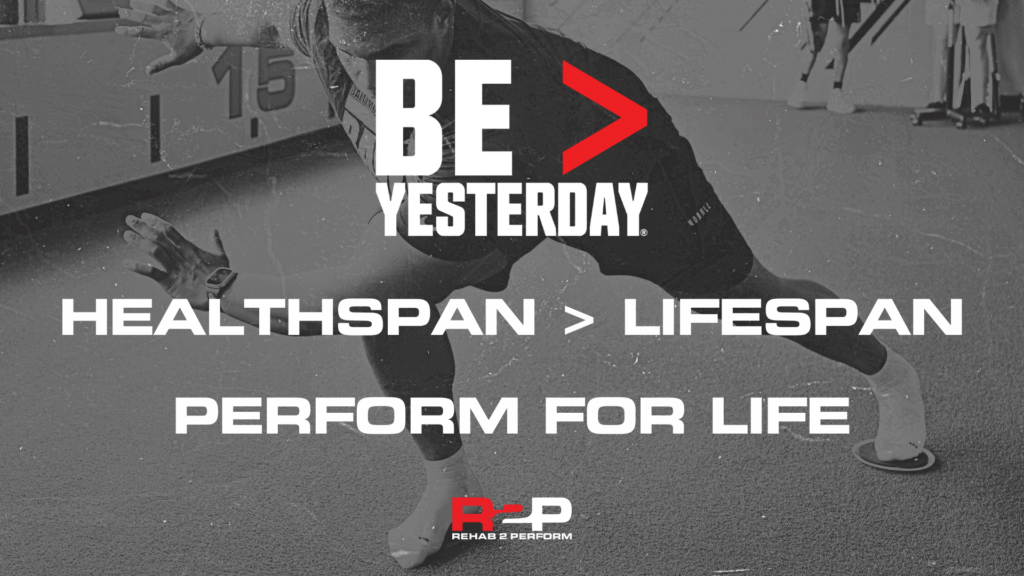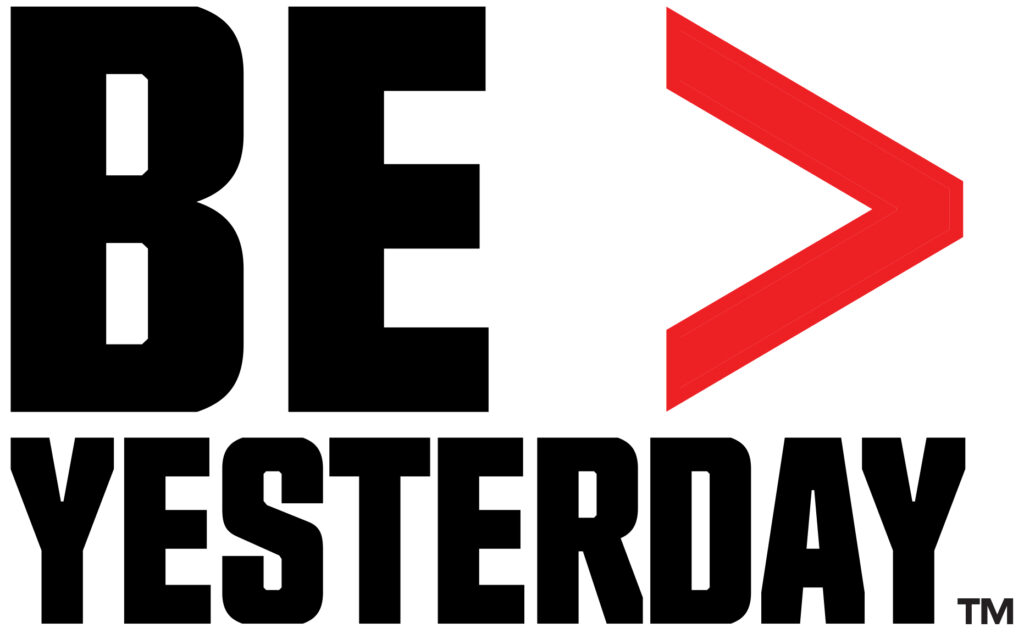What it Means 2 Perform for Life

Perform for Life: How to Train for Healthspan, Not Just a Highlight Reel
We often hear the word performance and immediately think of game day. Of athletes chasing records. Of hard-charging workouts or personal bests on the leaderboard. But real performance? It’s bigger than any single moment.
At Rehab 2 Perform, we believe that performance is about how you show up every day—not just in the gym or on the field, but in life. And most importantly, how you show up over time.
This is the shift from lifespan to healthspan.
Healthspan vs. Lifespan
Your lifespan is how long you live. Your healthspan is how long you live well.
It’s the years where you can move with confidence. Where you feel strong enough to do what you love. Where pain doesn’t dictate your choices. Healthspan is about quality, not just quantity.
At R2P, our approach to physical therapy and performance bridges rehab and fitness to help you expand your healthspan—not just recover from injury or get through a workout.
Performance Isn’t Just for Athletes
If you’ve ever picked up a child, hiked with a friend, carried groceries up the stairs, or wanted to keep up with a pickup game—congratulations, you’re performing.
And if you want to keep doing those things for decades to come? That takes intention. It takes consistency. It takes smart training.
Performance isn’t exclusive to people who wear jerseys. It belongs to everyone who chooses to show up, move with purpose, and get just a little better every day.
Movement Is a Long-Term Investment
We all know the benefits of movement in the short term: more energy, better sleep, clearer focus. But what we don’t talk about enough is how movement, strength, and recovery compound over time.
Small actions now lead to big outcomes later.
- A weekly lift improves bone density that protects you in your 60s.
- Prioritizing mobility keeps your joints moving in your 70s.
- A consistent walking habit maintains heart health into your 80s.
Longevity is built through small wins repeated often. You don’t have to overhaul your life—you just have to start stacking good decisions.
Train Smarter, Not Just Harder
In your 20s, you might have pushed through anything. Late nights, skipped warm-ups, no recovery plan. But if your goal is to keep performing in your 40s, 50s, and beyond, the strategy has to evolve.
That’s why at R2P, our philosophy focuses on:
- Movement quality over volume
- Sustainable strength building
- Active recovery and stress management
- Awareness of when to push—and when to pull back
Smart training keeps you in the game. It reduces risk. It improves performance. And it builds a body that doesn’t just survive workouts but thrives in everyday life.
Physical Therapy as a Long-Term Partner
Physical therapy isn’t just for when something goes wrong.
At R2P, we work with individuals who are healthy, active, and want to stay that way. Whether you’re dealing with a nagging ache, want a movement screen to catch potential issues early, or need help designing a performance plan around your goals—our team is here for more than rehab.
We are your movement coaches for life.
From assessments and strength guidance to recovery strategies and long-term planning, our role is to support your performance journey at every stage.
Perform for Life: It Starts with One Step
The concept of “performing for life” may sound big—but it starts small. With a morning stretch. A lunchtime walk. A decision to show up at the gym, even when it’s not your strongest day.
Over time, those small efforts build something unshakable.
So ask yourself: What do I want my body to be capable of 10, 20, 30 years from now?
Then start building it—today.
Want to dive deeper into this conversation?
We’re hosting a free virtual workshop on Tuesday, July 15th to explore what it means to perform for life—and how you can take actionable steps now for strength, resilience, and mobility in every chapter ahead.
Reserve your spot here: rehab2perform.com/workshop

_

About Rehab 2 Perform
Rehab 2 Perform® isn’t your typical physical therapy clinic – it’s a performance mindset.
We help active adults, competitive athletes, and everyday performers BE > YESTERDAY and Perform for Life.
With a team of expert professionals across 12 cutting-edge locations, R2P delivers personalized, evidence-based care in an energetic, gym-style environment. From injury recovery to performance optimization, our proactive approach blends strength, movement, and education to keep you in the game – whatever your game looks like. Whether you’re training for a race, a return to sport, or just to live stronger every day, we’ve got your back!
Find a Location Near You or Schedule Your Initial Evaluation Today.

